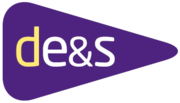Definitions
| Name | Term description |
Source |
|---|---|---|
| Auditor |
Person with the competence to conduct an audit. (see also Lead Auditor). |
ISO19011 |
| Audit |
A systematic independent and documented process for obtaining audit evidence and evaluating it objectively to determine the extent to which the audit criteria are fulfilled. Types of audit include:
|
ISO 19011 |
| Audit Conclusion |
Outcome of an audit, provided by the audit team after consideration of audit objectives and all audit findings |
ISO 19011 |
| Audit Criteria |
Set of policies, procedures or requirements against which a system process or material is audited. |
ISO 19011 |
| Audit Scope |
Extent and boundaries of an audit. |
ISO 19011 |
| Assumption |
An assertion about the system, its operating environment or modes of use, that is employed without proof, although justification may be required |
Def Stan 00-56 Issue 6 |
| Availability |
The ability of an item to be in a state to perform a required function under given conditions at a given instant of time or over a given time interval assuming that the required external resources are provided. |
Def Stan 00-56 Issue 6 |
| Accident Sequence |
The progression of events that results in an accident. |
Def Stan 00-56 Issue 5 |
| Accident |
An event, or sequence of events, that: causes unintended harm, such that a person is killed or suffers an injury. An accident sequence will need to consider the functional safety of equipments/systems involved. |
Def Stan 00-056 Issue 8 |
| ALARP |
ALARP is short for "as low as reasonably practicable". SFAIRP is short for "so far as is reasonably practicable". The two terms mean essentially the same thing and at their core is the concept of "reasonably practicable"; this involves weighing a risk against the trouble, time and money needed to control it. Thus, ALARP describes the level to which we expect to see workplace risks controlled. |
Def Stan 00-056 Issue 8 |
| Assurance |
A statement, or process, intended to provide confidence on the condition or status of a system, process, activity, or materiel. Types of assurance include:
|
Adapted from Def Stan 00-56 Issue 6 |
| Acquired Item |
In the context of this manual, ‘acquired item’ refers to a capability being procured through the acquisition process. It is intended to differentiate between the system being procured and the safety management system. |
|
| Activity |
The operations of an organization that are ‘large enough for meaningful examination and small enough to be sufficiently understood’. For example, vehicle maintenance. |
|
| Audit Client |
The person/project/IPT/organisation requesting the audit. |
|
| Audit Objectives |
Statement(s) setting out the purpose and aims of the audit. These should be set by, or agreed with, the audit client and should form the basis for the audit scope and criteria. |
|
| Audit Plan |
Description of the activities and arrangements for an audit. |
|
| Audit Programme |
In relation to DE&S Acquisition Safety Environmental Management Standard (ASEMS) the audit manual together with the Audit Schedule forms an Audit Programme. |
|
| Audit Report |
The written report supplied by the Lead Auditor to the Audit Client describing the audit, findings and conclusions. |
|
| Audit Schedule |
Specifies the scope, frequency and timeframe for completing audits. |
|
| Audit Team |
Team of auditors, including a lead auditor, conducting an audit. May also include specialist matter experts (see SMEs) and trainee auditors. |
|
| Audit Trail |
Series of linked and related questions asked, and the evidence produced, in order to ascertain compliance against a specific objective or to support the accuracy of data or claims. The questions and evidence making up an audit trail should be documented and the trail should be repeatable. |



